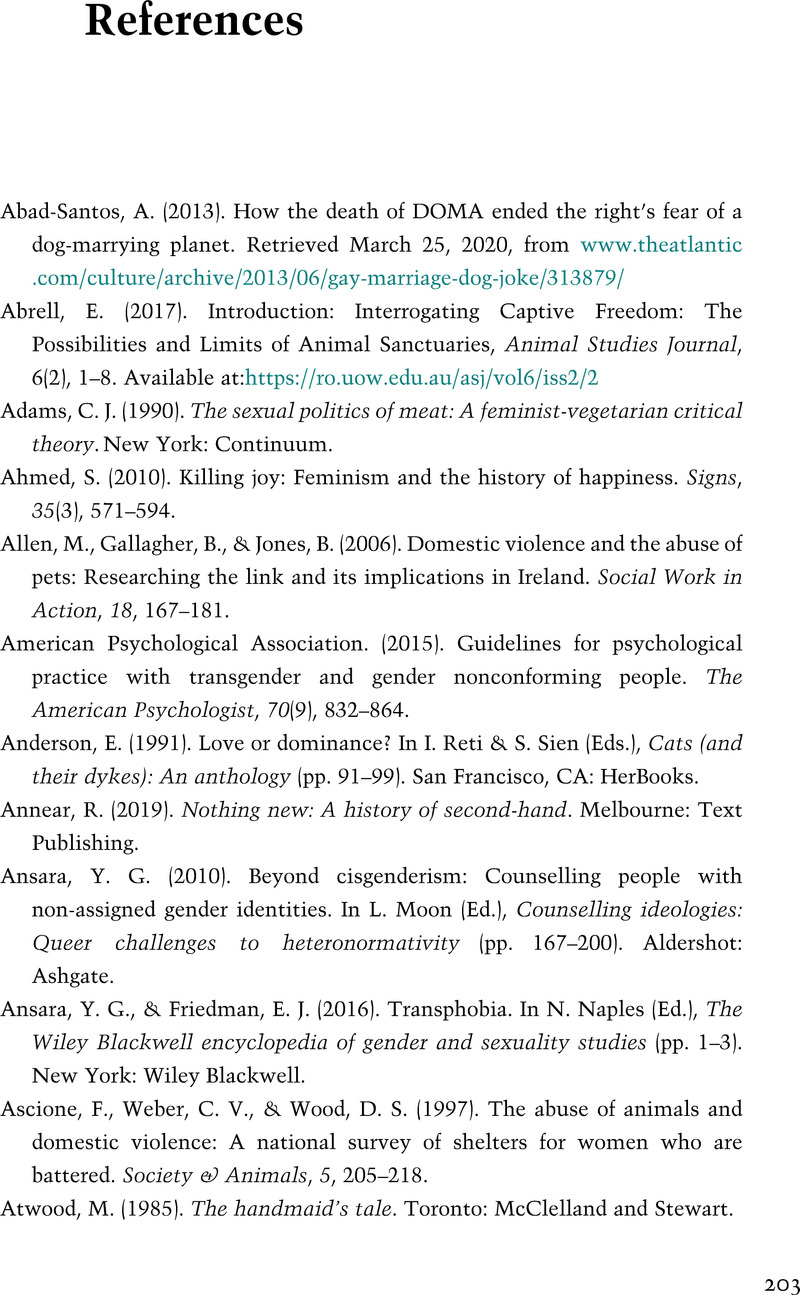Book contents
- Queer Entanglements
- Queer Entanglements
- Copyright page
- Contents
- Figures
- Acknowledgements
- Frontispiece
- 1 Menageries, Enmeshment, and Irreducibility
- 2 Love, Loss, and Grief
- 3 Violence, Cruelty, and Rescue
- 4 Sameness, Difference, and Intercorporeality
- 5 Rainbows, Flags, and Bridges
- 6 Consumption, Consumerism, and Kink
- 7 Voice, Responsibility, and Liberation
- References
- Index
- References
References
Published online by Cambridge University Press: 09 July 2021
- Queer Entanglements
- Queer Entanglements
- Copyright page
- Contents
- Figures
- Acknowledgements
- Frontispiece
- 1 Menageries, Enmeshment, and Irreducibility
- 2 Love, Loss, and Grief
- 3 Violence, Cruelty, and Rescue
- 4 Sameness, Difference, and Intercorporeality
- 5 Rainbows, Flags, and Bridges
- 6 Consumption, Consumerism, and Kink
- 7 Voice, Responsibility, and Liberation
- References
- Index
- References
Summary

- Type
- Chapter
- Information
- Queer EntanglementsIntersections of Gender, Sexuality, and Animal Companionship, pp. 203 - 225Publisher: Cambridge University PressPrint publication year: 2021

